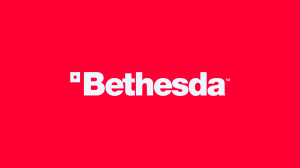The Platform has quickly become a major hit on Netflix, becoming the most popular movie on the streaming service just a few days after its release. For a Spanish movie with English subtitles, that’s quite a feat. The unique and terrifying premise of the film, a seething portrayal of capitalism and greed, sees prisoners divided amongst hundreds of vertical levels, with food being passed down from the top floor down to the bottom each day. Those at the top eat their fill, and the some, while those at the bottom are forced to starve and kill each other. The Platform is most certainly a thinker, one that will stick with you for a while, especially when it comes to the film’s incredibly open, head-scratching finale.
Videos by ComicBook.com
WARNING: This article contains major spoilers from The Platform on Netflix! Continue reading at your own risk…
The main character in The Platform, Goreng, is inherently a good person, though The Pit has made him do some horrific things. Still, despite everything he experiences in his first four months in The Pit, he wants to do right by others and help upend the broken system. Every month in The Pit, prisoners are moved to different floors, and Goreng ends up on Level 6, one of the highest levels in the entire prison. He’s got it made, but still teams up with his new cellmate Baharat to try and disrupt the system, riding the platform all the way to the bottom to ensure everyone eats.
Both men are convinced by an older, wiser prisoner that they need to send a message back to the cooks at Level 0. They decide to preserve the panna cotta, a perfectly composed dish, throughout the entire journey and send it back to the top untouched, showing that the people in The Pit reject their way of life. However, after battling through many more levels than they believe exist, 333 in total, they discover something much greater.
On the very last level of The Pit, Goreng discovers the young child of the murderous woman Miharu, who rode the platform down every month to try and find the child. Earlier in the film, Goreng was told that no one under 16 was in The Hole and that the child didn’t exist, that she was purely a story made up by Miharu, who was nothing more than a cannibalistic serial killer. Unlike everyone else on the lower floors, the child was clean, reasonably well-fed, and seemingly of a sound mind. Miharu wasn’t looking for her daughter each month, she was making sure food made it down to her.
The appearance of the child raises some questions about the mythology of The Platform, since it appears that she has remained on the 333rd floor this entire time, and not shuffled around like the rest of the prisoners. This indicates that those in charge of The Pit either spread lies to its employees and prisoners, or that they simply don’t bother to monitor the lowest levels because they’re essentially a death sentence. Probably a bit of both.
Goreng decides, thanks to hallucinations of his previous cell mates, that the child is the message, not the food. By sending her back to the top, he can show that life can be preserved in The Pit, and that people are able to look out for one another, rather than turn on themselves like the system intends.
Ultimately, Goreng doesn’t go back to the top with The Child, and there’s a reason for that. Although he has good intentions, he’s corrupted by the evil of The Pit, forced to do horrible things. The Child, on the other hand, has remained innocent and pure through the entire situation. It’s an allegory for the world we live in. Our system is broken, and everyone who has lived in it long enough is at least somewhat changed by it. It’s up to them to create an opportunity for the younger generations, those who haven’t become jaded corrupt, to rise above and change things.
What did you think of The Platform? Let us know in the comments!








